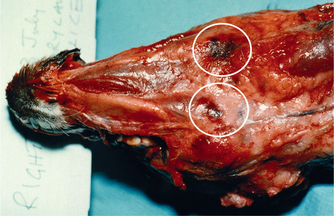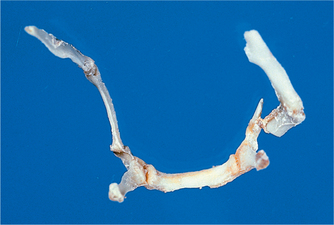9 Asphyxia and Drowning
Strangulation
Strangulation may be deliberate or accidental. Canine victims of deliberate strangulation may be hanged from a tree branch (Fig. 9.1), a loft hatch or other convenient high point. The dog’s lead, rope, dressing-gown cord, electric flex or wire may be used. Accidental strangulation can occur when a tethered dog jumps over, or on to, a kennel roof or platform and becomes trapped with the tether tight around the neck. In horses and ponies, accidental strangulation by a neck rope or head collar can result from poor animal husbandry practices. Similarly, non-elasticated collars can contribute to strangulation of domestic cats.
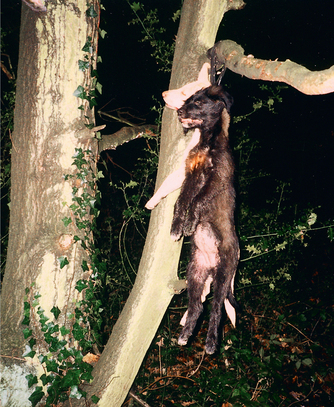
Fig. 9.1 Two puppies hanged from a tree by their leads.
(By kind permission of the Royal Society for the Prevention of Cruelty to Animals.)
Externally there may be limited evidence of ligature marks in fatal strangulation. The hair and looseness of the skin around the neck can protect against skin abrasion (Case study 9.1). However, careful examination may reveal areas where there is indentation of hair (Fig. 9.2) or patchy loss of hair or reddening or mild bruising of the skin (Fig. 9.3). Cyanosis may affect the teats, perineum and vulva. Focal intradermal haemorrhages can develop in the skin of the posterior abdomen and immediately cranial to the ventral vulva in dogs that have been hanged. There may be more generalised congestion of the skin of the ventral neck, thorax or abdomen.
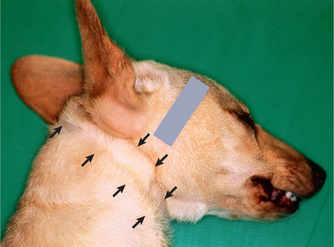
Fig. 9.2 The lighter coloured puppy shown in Figure 9.1 has indentation of the hair around the neck (arrows) but no abrasions of skin or neck bruising.
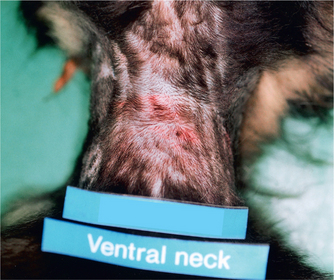
Fig. 9.3 The darker puppy shown in Figure 9.1 had mild bruising and reddening of the skin on the ventral surface and both sides of the neck. It was necessary to clip the hair to appreciate this change.
Subcutaneous bruising may be present over the larynx, at the angle of the jaw (Fig. 9.4) or where the knot in the ligature has tightened against the neck in animals that have been hanged by being dropped from a height. These animals may also show epiglottic congestion, fresh ecchymotic haemorrhages over the laryngeal cartilages or in the glosso-epiglottic fold and congestion of the sclera of one or both eyes. Fracture of the hyoid apparatus may occur in mature animals with mineralised hyoid bones (Fig. 9.5). There appears to be limited published information on the age of mineralisation of the hyoid bones1 in the various species and breeds, and radiographic examination of the neck in alleged strangulation cases is recommended before the commencement of the necropsy.
Stay updated, free articles. Join our Telegram channel

Full access? Get Clinical Tree


